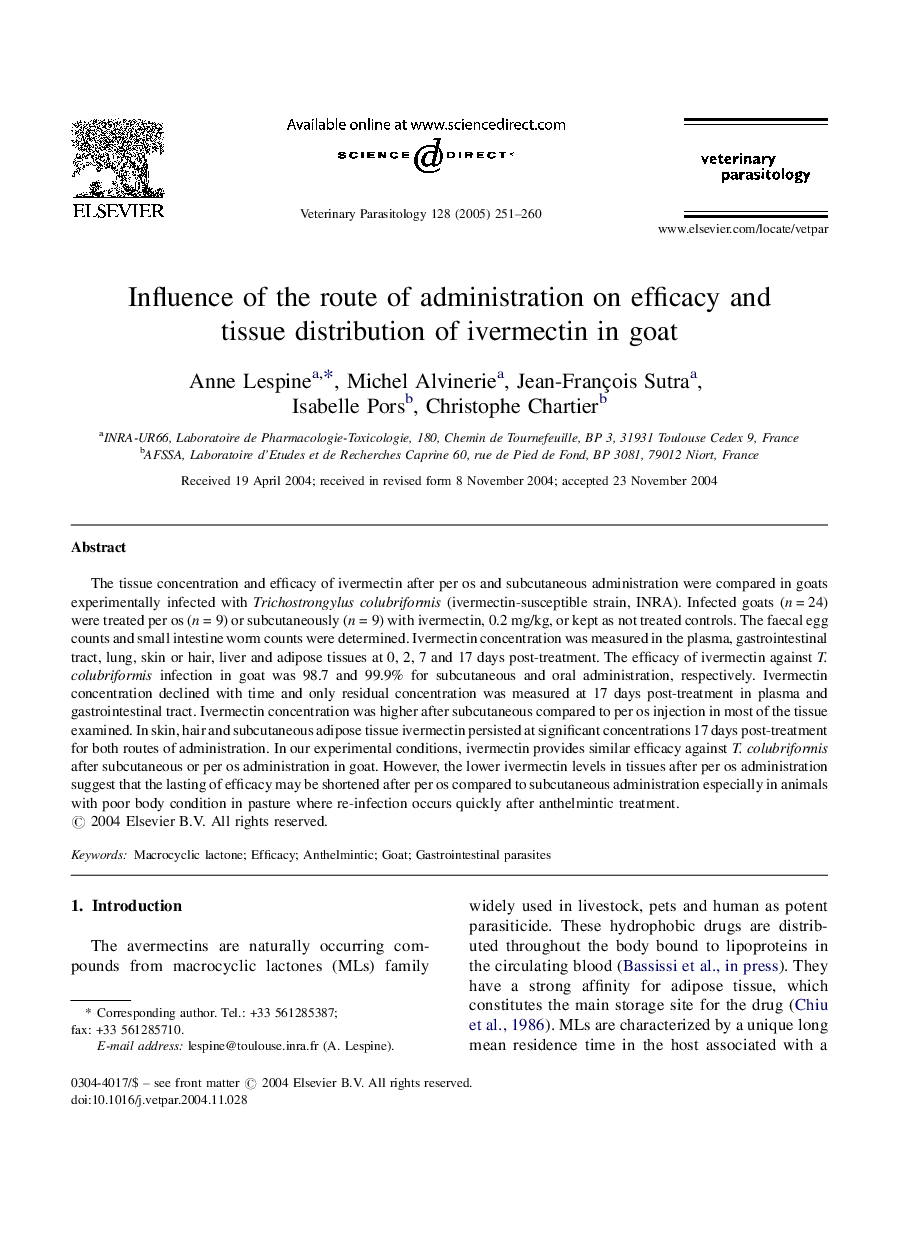| Article ID | Journal | Published Year | Pages | File Type |
|---|---|---|---|---|
| 8991318 | Veterinary Parasitology | 2005 | 10 Pages |
Abstract
The tissue concentration and efficacy of ivermectin after per os and subcutaneous administration were compared in goats experimentally infected with Trichostrongylus colubriformis (ivermectin-susceptible strain, INRA). Infected goats (n = 24) were treated per os (n = 9) or subcutaneously (n = 9) with ivermectin, 0.2 mg/kg, or kept as not treated controls. The faecal egg counts and small intestine worm counts were determined. Ivermectin concentration was measured in the plasma, gastrointestinal tract, lung, skin or hair, liver and adipose tissues at 0, 2, 7 and 17 days post-treatment. The efficacy of ivermectin against T. colubriformis infection in goat was 98.7 and 99.9% for subcutaneous and oral administration, respectively. Ivermectin concentration declined with time and only residual concentration was measured at 17 days post-treatment in plasma and gastrointestinal tract. Ivermectin concentration was higher after subcutaneous compared to per os injection in most of the tissue examined. In skin, hair and subcutaneous adipose tissue ivermectin persisted at significant concentrations 17 days post-treatment for both routes of administration. In our experimental conditions, ivermectin provides similar efficacy against T. colubriformis after subcutaneous or per os administration in goat. However, the lower ivermectin levels in tissues after per os administration suggest that the lasting of efficacy may be shortened after per os compared to subcutaneous administration especially in animals with poor body condition in pasture where re-infection occurs quickly after anthelmintic treatment.
Related Topics
Life Sciences
Agricultural and Biological Sciences
Animal Science and Zoology
Authors
Anne Lespine, Michel Alvinerie, Jean-François Sutra, Isabelle Pors, Christophe Chartier,
